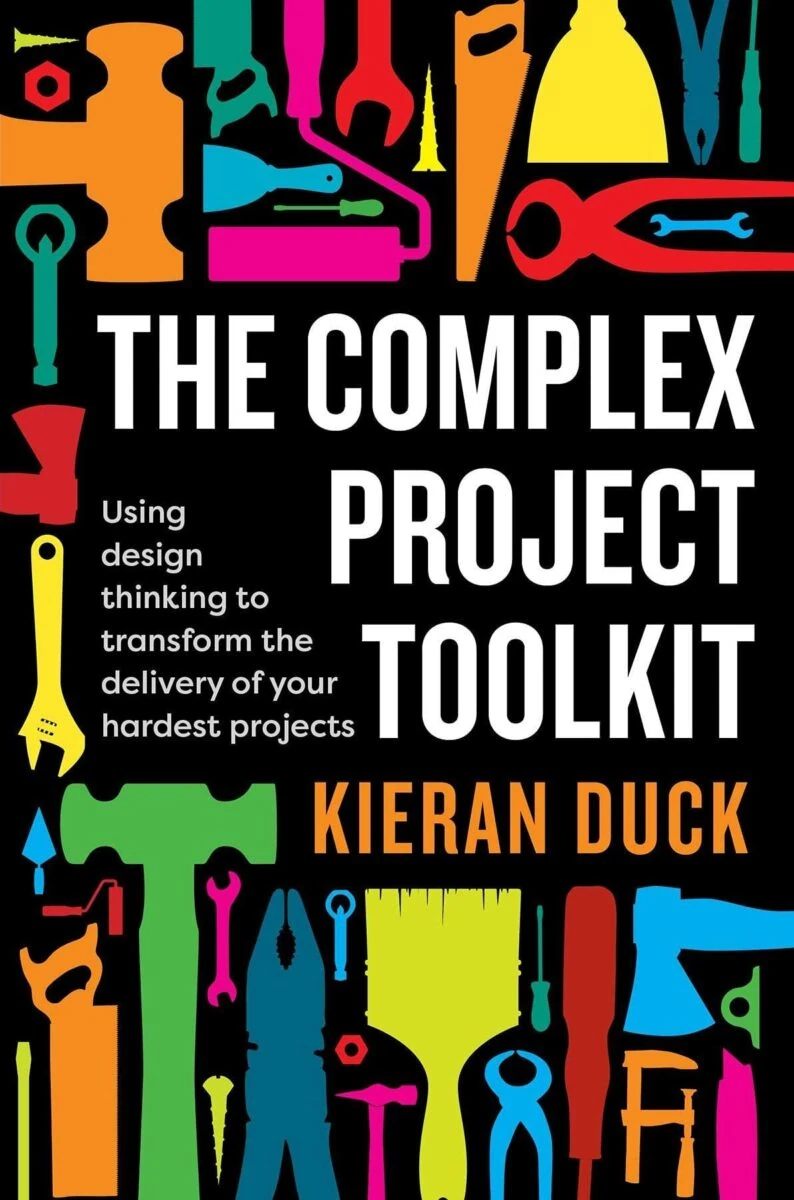The Complex Project Toolkit (Book Review)
This blog is reader-supported. When you purchase something through an affiliate link on this site, I may earn some coffee money. Thanks! Learn more.
Read our review guidelines.

The Complex Project Toolkit is really a book about paradigms in project management and how to encourage teams (and project managers) to stay curious and to embrace uncertainty. This is not a ‘how-to’ book with templates or checklists, but rather a scaled-out strategy view. It’s packed with examples from history, science, as well as some project anecdotes.
The book moves at a good pace and doesn’t drown you in theory. There is enough research and detail to support the line of thinking while not getting too philosophical.
Kieran also uses a lot of matrices to compare the ‘standard’ vs his complex project management methodology, which is useful for those who are more visual like myself.
What makes a project complex?
The Complex Project Toolkit flows logically. The first half of the book starts by taking us through a brief history of projects and project management. It then defines complexity and analyzes what characteristics makes certain projects unique.
Next it looks at ‘standard’ scientific project management methodology, which is based on empirical and reductionist thinking – and this approach ultimately falls short on complex projects where there are a lot of unknowns.
The toolkit for managing complex projects
The second half of the book is focused on the toolkit itself and how it was inspired by design thinking that is more generative and responsive.
The toolkit is broken down into mindsets, practices, and skills – which address each of the complexity characteristics to varying degrees.
Finally, the book wraps up with a quick discussion on application or “making it happen”.
Key takeaways
For me, the key takeaway is to get comfortable with uncertainty and to let curiosity lead you down an unknown path. The premise being that it’s better to accept challenges and new information as it comes so they can inform the process – for better or for worse.
Naturally, a project can’t remain in a state of exploration indefinitely, as decisions will still need to be made. But ultimately this book is about loosening our grip on some of the ideological certainty that we grasp for in our automatic responses.
I think it’s worth stating that Kieran isn’t advocating an either/or use of standard versus complex methodology – he repeatedly makes the point that there’s nothing wrong with traditional methods, especially in standard and replicable projects.
This book is really aimed at tackling unique or ground-breaking projects where there are no precedents. Therefore, the Complex Project Toolkit could be seen as a supplement to the traditional ways of working.
Other thoughts
For the first half of the book I did find myself waiting for the explanation of how this methodology is different from
I have to admit that I wasn’t completely on board with his definition of
Having said that, whether his thinking is completely distinct from
Coming from architectural project management myself, I find it interesting how we as designers operate with design teams in a different way than we do for the overall management – during concept and design development it’s extremely iterative, whereas the project management is largely waterfall with occasional periods of hybrid.
It was fun to see this iterative thinking scaled out and applied as a larger project framework in the toolkit.
The application part at the end of the book felt a bit wanting for me. When dealing with certain companies or teams the ability to suggest a mindset shift as a project manager is easier said than done.
He does give some tips on starting small, picking a couple of strategies rather than dumping a whole new framework on everyone. Though getting buy-in from ‘the powers-that-be’ for high-stakes projects could be a workshop in itself. Maybe an idea for a follow-up book?
Conclusion
The idea behind this book is that you can’t plan for complexity. But what you can do is breed a culture of curiosity so that your team can remain fluid in the face of many unknowns.
As project managers we love to plan. But unfortunately most of us know that our first plan is never the only one and that there will be many iterations to follow. And that’s ok. It’s up to us how we respond to challenges – so in that way the Complex Project Toolkit can be yet another tool we have at the ready.
Overall I highly recommend it.
I received a copy of this book from the publisher for review.
